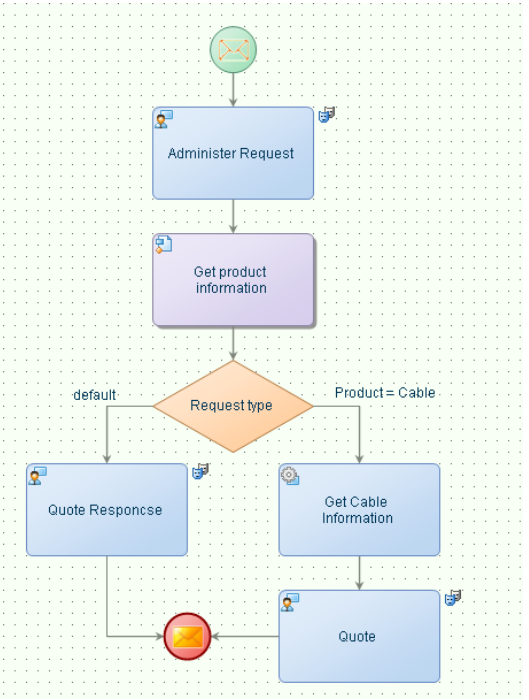Conceptual-level Workflow Models
Conceptual-level Workflow Models typically provide an end-to-end view of an entire Business Process unless the Business Process is so complex that it requires more than one conceptual level. The purpose of a conceptual-level Workflow Model is to organize and link together the more detailed models that are based on their Activity Usages.
If the Business Process was properly decomposed by first using the Process Model, all of the Activity Usages in the conceptual level of the model should be the subjects of other Workflow Models.
Elemental-level Workflow Models
Elemental-level Workflow Models typically provide the detailed responsibility needed for understanding the nature of current work or for providing the operating procedures for implementing the changes in revised Business Processes. They are usually the lowest level of Workflow Model needed to document most Business Processes.
Task Flow-level Workflow Models
Task Flow-level Workflow Models are optional models that provide a detailed understanding of the specific tasks that an Actor is responsible for between handoffs from and to other Actors. In a Task Flow model, all of the Activity Usages are in the same Workflow lane. The only Workflow links that should cross Workflow Lanes in this model type should be the one(s) from the contextual object(s) to the first task in the sequence or the one(s) from the last task in the sequence to the contextual object(s).
This level of the Workflow Model can usually be documented by simply listing the task-level steps in the description of the Activity Usage. In other words, document the steps textually rather than building another Workflow Model with all Activity Usages in the same workflow lane. Creating Task Flow-level Workflow Models is very expensive and should be avoided unless all of the following are true:
- The Activity Usage that the model is based on is performed frequently enough that even small (task-level) changes could yield significant results.
- All of the tasks are not performed all of the time. The Task Flow-level Workflow Model will have at least one Decision Point.


